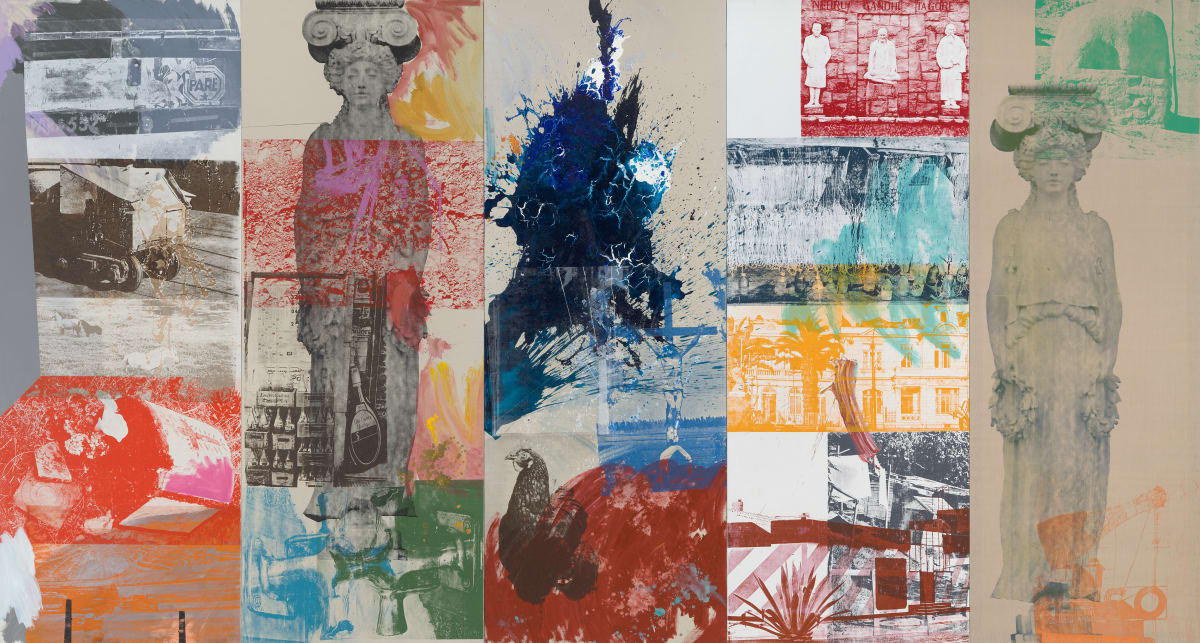Georg Baselitz Le Côté Sombre
8 September – 2 November 2013
Baselitz's first sculpture was shown in the German Pavilion at the 1980 Venice Biennale. Since then he has made only a few.
After Edgar Degas and Paul Gauguin, artists such as Umberto Boccioni, Pablo Picasso, Henri Matisse and Max Ernst chose a readily malleable material when they had reached the limits of painting. Baselitz stands in this tradition of painters who leave their medium. He finds sculpture “a shorter way than painting”, to tackle certain problems; it is “more primitive, brutal, not as reserved [...] as painting can sometimes be”, and “less cryptic than pictures, far more direct, more legible” (Georg Baselitz, 1983). Besides this recourse to Expressionist sculpture, an important field of reference for Baselitz's sculpture is the fundamental nature of African sculpture, where specific basic types have been developed over a long period.
Baselitz works exclusively with wood, negating both the idea of doing justice to the material and that of the stuffy, conservative reputation of wood sculpture. “Any appealing form [..] any arty-crafty elegance or deliberate construction is taboo” (Georg Baselitz, 1987). With great physical effort, he hacks, stabs and saws the block of wood, taking no account of the grain. “For a sculpture to take shape, the wood has to be forcibly opened” (Uwe Schneede, 1993).
Baselitz has cast limited editions of his wood sculptures in bronze at the long-established Hermann Noack fine art foundry in Berlin. Here the finest details of the sculpted wood are reproduced and burnished in black by the artist. On Baselitz’s black, unreflective surfaces, John-Paul Stonard remarks in his exhibition catalogue essay: “They betray the light absorbing wood from which they were originally carved; memory falls into them, rather than drama out of them.”
Georg Baselitz’s new bronzes include Sing Sang Zero, a standing couple with arms interlinked, and three fetishistic sculptures – Marokkaner, Yellow Song, Louise Fuller - a humanoid figure enclosed in rings. Louise Fuller was a gentle parody of the American dancer famous for her act with veils.
The monumental BDM Gruppe revived his childhood memories of three parading girls in his native town of Deutschbaselitz. John-Paul Stonard writes: “These village beauties […] could not be further from the Three Graces of antiquity, shown most famously in smooth white marble by Canova, or with classical restraint by Raphael. So much has been lost or transfigured. What has survived, from a memory that must have been filtered a thousand times, is the motif of the linked arms. Not hands held, but arms linked; a rare motif in the history of art.”
In the past months Baselitz had been working on a new series titled Black Paintings. After Blackout (2009) and The Negative (2012), the series in black seemed to be a logical step. Expressive representations of birds and human figures may be discerned in these pictures, though the shades Baselitz used render them almost invisible. The figuration was revealed more through the highly structured surface of the heavy layers of black, dark blue and brown. In his essay for the exhibition catalogue, Michael Semff wrote: “The artist surprises us with a radically new pictorial concept which, in almost minimalist reduction, aims to eliminate all visible contrasts. [...] Time seems to have stopped here – not in the sense of standstill, but of exhaustion, calming 'after the battle'.” Semff points out that twenty years before he created these Black Paintings, Baselitz already described his approach to painting, which still holds today: “I try to work without experience, without training, in a way I myself don't know. I don't want continuity ... I set great store by waking sleep.” For his new series, shown in Pantin for the first time, Baselitz went beyond this idea, confessing: “I dream of painting an invisible picture”.













































































































































































